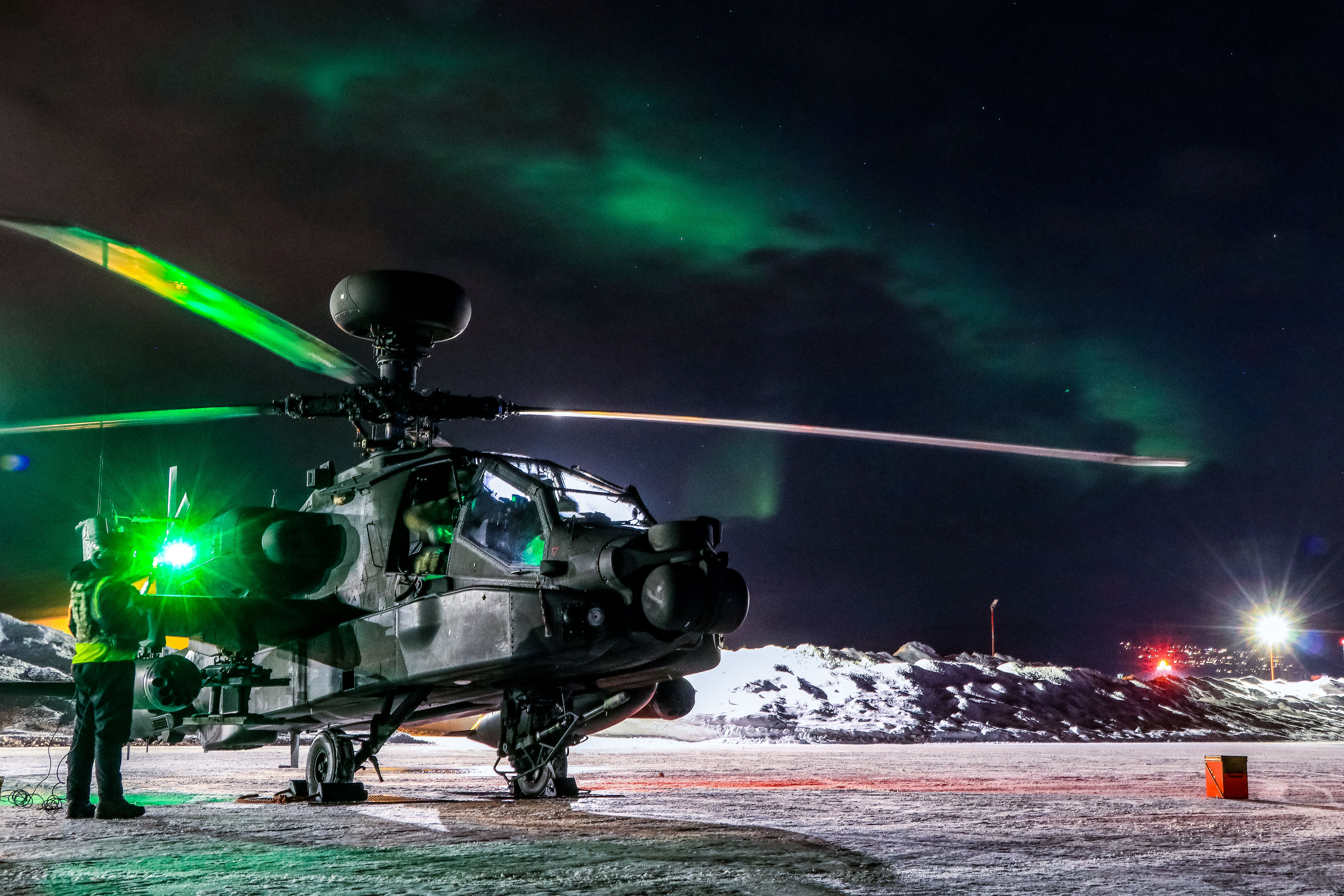The British Army’s Apache attack helicopters have fired potent Hellfire missiles inside the Arctic circle for the first time. Facing temperatures dropping to -30°C and white-out flying conditions, 656 Squadron 4 Regiment Army Air Corps is training in the far north of Norway.
Together with RAF Chinook and Royal Navy Wildcat helicopters, the Squadron is preparing for Exercise Cold Response in March, which involves 14,000 troops from 10 nations to test the ability of NATO forces to operate together in the Arctic. For 656 Sqn, the deployment has been focused on proving its warfighting ability after the Apache made its Arctic debut in early 2019.
Officer Commanding Major Huw Raikes said: “Last year the Squadron learnt how to operate the Apache in the Arctic. The extreme cold presents unique differences to how we normally conduct our business but we have developed ways to overcome the human, engineering and flying challenges. This year we have established new and innovative ways to fight the aircraft. This has relied immensely on the support of the Royal Navy’s Commando Helicopter Force, who have a long experience of operating in the Arctic that has been generously shared."
Also he added, “Firing Hellfire missiles for the first time is a significant milestone in proving the capability of the aircraft in this environment; it’s an achievement that everyone in the Squadron has contributed to and can be rightly proud of. We’re now looking forward to flying in support of the Royal Marines and our NATO partners on Exercise Cold Response.”
The Hellfire is a precision missile used to strike ground and maritime targets; the Apache is able to carry up to 16 missiles. The live fire ranges saw groundcrew establish a Forward Arming and Refuelling Point (FARP) – the military equivalent of a Formula 1 pit stop – to load missiles and 30mm cannon ammunition on to Apaches. Wildcat battlefield reconnaissance helicopters provided target identification and designation with their powerful suite of sensors, with the missiles fired at barges both moored and moving in the Norwegian Sea.
656 Sqn maintains a force of Apaches on standby to provide an aviation strike capability to the Royal Marines of 3 Commando Brigade, the British military’s extreme cold weather warfare specialists.
The Arctic is a very demanding environment and, given our role, it’s vital that we have the experience of working in it. Under turning rotors it can get down to -40°C and the extra clothing means it’s that bit harder and slower if I have to work on a radio. To maintain communications with the aircraft, I have to factor in the different terrain and atmospheric conditions and have learnt a lot. Aviation communications specialist Lance Corporal Joshua Bulpin




